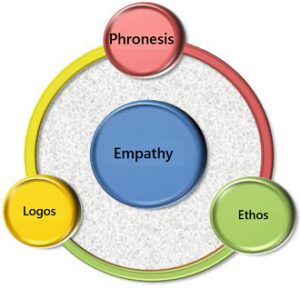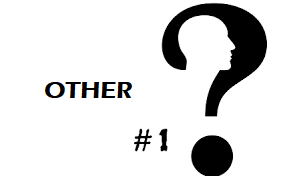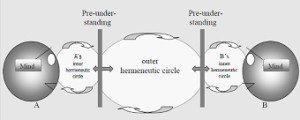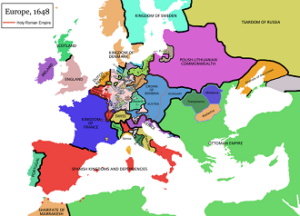
Arquivo para a ‘’ Categoria
Empathy and phronesis
Frônesis (phrónesis, from ancient Greek: φρόνησις), in Aristotle’s Nicomachean Ethics, book IV, is distinguished from both theory and practice because it is a virtue of the wisdom of practical thinking, however a modern adaptation of Hans -Georg Gadamer is situated between logos and ethos, this relationship can thus bring “theoretical” love closer to an empathic practical action.
Nicomachean Ethics, book IV, is distinguished from both theory and practice because it is a virtue of the wisdom of practical thinking, however a modern adaptation of Hans -Georg Gadamer is situated between logos and ethos, this relationship can thus bring “theoretical” love closer to an empathic practical action.
Thus, phronesis is inserted in human actions as phenomena through a hermeneutic examination of opinions, not only to reveal the immutable principles of the causes of this action, but above all to understand that from the mere opinion (the doxa) of the Other, it is possible to help it through empathy to reach knowledge (episteme).
It works as a true action of attraction that leads the Other to reflect. within the hermeneutic circle, it is a matter of allowing a reading of the Other’s preconceptions and paying attention to one’s own, so the actions that result from it can be more empathic, explaining in a phrectic (practical) way: reading what the Other actually wants and think.
This knowledge leads to a new episteme (theoretical conception of new horizons) in which it is possible to think of a joint or at least convergent action, as we have said before, empathy is an originally natural relationship, while disempathy (it is different from the antipathy that is opposed to sympathy) is the rejection of the Other, rather something that has become naturalized, due to hermetic ideologies and preconceptions that are impossible to reread.
The real law of attraction is empathy, since it can reinforce positive, collaborative and socially collective actions, while simple opposition leads to the repulsion of the Other and the creation of non-converging poles of opinion (doxa) and knowledge (episteme). and non-humans, it is not about simple logic, but onto-logic, the logic of Being.
Because this has become so widespread and widespread is simple, a strong non-humanist system of thought developed with the aim of power and enrichment, not only colonizing and xenophobic, but above all non-ontological, unbecoming of being.
The idea of simple rejection may seem natural, however it can lead to another system of domination polarized and structurally authoritarian and thus non-empathetic and non-frenetic, again simple theories that in practice prove to be disastrous.
The truth among men
Gadamer establishes the need for co-reference for the construction  of truth among men, the philosopher Socrates also said that the truth is not with men, but among men, so every self-referential discourse, even that appropriated by a group no longer has a truth growing and becomes just rhetoric.
of truth among men, the philosopher Socrates also said that the truth is not with men, but among men, so every self-referential discourse, even that appropriated by a group no longer has a truth growing and becomes just rhetoric.
Emmanuel Lévinas (1906-1995) developed the aspect of human finitude, as that which gives a provisional totality, in his book Totalidade e Infinito where he discusses the theme of alterity, with a central issue that is not being able to objectify the Other , and it is not about subjectivity, but the possibility of thinking of the Other in its absolute Otherness, in other words, as a totally other.
His book cannot be understood without an analysis focused on Husserl and Heidegger because of its phenomenological option in which it is affiliated, thus developing in this first chapter the category of alternation, while the second will deal with interiority, there appear notions of categories such as: jouissance , economy, home, ownership, work and the feminine is a topic that is so current in the question of gender and reflects the relationship of the Self with the real, enabling the building of a being at the same time separate and open to the outside.
Thus, the third chapter relates to the exteriority that underlies an ethics proposed by Lévinas, how an opening is given or built in Being, through the analysis of the categories of Infinity, Face and Exteriority, they are fundamental for the understanding of the Levinasian universe. .
The problem of human finitude in the aspect of truth can refer to a transcendence different from the idealist proposal, where the imperative category is linked to the concept of subjectivity: “acts in such a way that it is a model for others”, thus it is possible to develop in a personal universe an ethics, while for Lévinas, as it is for Gadamer and it was for Socrates, truth can only exist in a process of dialog with the Other and with the outside, every closure is self-referential.
Thus the “Other remains infinitely transcendent, infinitely strange, but his face, where his epiphany takes place and which appeals to me, breaks with the world that may be common to us and whose potentialities are inscribed in our nature and which we also develop in our existence” (Lévinas, 2008), here an epiphany that is only human.
We approach the Christmas feasts, in the Christian liturgy it is the feast of the divine epiphany, the divine manifestation to the peoples, for many only the feast of the wise men or the baptism of Jesus, but for those who think that the truth is “among men”, the presence of God with Us (Emmanuel) happens from the birth of the God-child.
In the biblical text (Jn 18: 37), when asked by Pilate if Jesus was the king of the Jews, he replied: “You say: I am king. I was born and came into the world for this: to bear witness to the truth. Everyone who is of the truth listens to my voice”, thus this truth among men is also established for Christian culture as the incarnate word.
Truth and finities´s humans
Not only did Hans Georg Gadamer write about the truth regarding Human finitude, Emmanuel Lévinas also developed the theme.
Human finitude, Emmanuel Lévinas also developed the theme.
In Gadamer, the conclusion about the truth of human experience is the awareness of its finitude, that is, it is knowing your own limits, knowing that you are not lord of time and the future, nowadays that you are not lord of nature and its behavior , the great Enlightenment ideal, and so it has its limits and its plans are insecure.
Thus, in Gadamer, the issue of rhetoric and discourse is not exactly an issue and the question is not really called into question, to be able to question it is necessary to really want to know the truth and it may be outside the limits of the questioner, says in your text:
“To ask, you have to want to know, that is, to know that you don’t know. And in the exchange of questions and answers, of knowing and not knowing, described by Plato as a comedy, one ends up recognizing that for all knowledge and discourse in which one wants to know the content of things, the question takes precedence. A conversation that wants to explain something needs to break these things through with a question” (GADAMER, 2008, p. 474).
Thus, it will be inscribed beyond prejudice, and in the constitution of new horizons, thus understanding the text or a fragment of the past, for Gadamer is to understand it from the issue that should be seen as a process of continuous fusion or broadening of horizons through which the interpreter participates with others in the long and arduous path of meaning, he goes beyond the romantic and historical Enlightenment point of view, which is unacceptable: the symbolic and plural language, characteristic of the narrativity of things.
But what does this mean? what this means for the philosophical hermeneutics that recognizes human finitude, there is no immediate possibility of a coincidence with the real, as every human understanding is linguistically mediated as every language is, in the Aristotelian view, a hermenia (interpreter) originating from the real and this it can be extended to cultures, to peoples, and especially to native peoples, primary sources of discourse and their own language.
As man is finite, only in language can his fundamental dialogical power reach what Western philosophy calls objectivity (proper ideality), but it must go beyond the point of view of the anonymous transcendental subject (idealist subjectivity) to reach the dimension of co. -reference of concrete men, of others.
Concreteness is thus the word that decenters and challenges, places what is said in otherness, and its perspective of tracing a fusion of new horizons does not end.
GADAMER, H.G. Truth and Method I. Fundamental features of a philosophical hermeneutics. 10th ed. Petrópolis, Brazil: Vozes, 2008
The truth and the method
Hans Georg Gadamer is the heir to Heidegger’s ontological hermeneutics, and he developed philosophical hermeneutics through his masterpiece Truth and Method, first published in 1960.
hermeneutics, and he developed philosophical hermeneutics through his masterpiece Truth and Method, first published in 1960.
To develop it, it needed to revolutionize modern Western hermeneutics, through the critique of aesthetics, the theory of historical understanding and the development of the ontology of language, to complement the Heideggerian method of the hermeneutic circle.
The publication of Truth and Method still means, today, a new study in the science of interpretation, which enters an important phase called philosophical hermeneutics, which should help human disciplines to seek, from experience, the understanding of their own being, constituting a a new philosophical attempt to assess understanding itself as a process of knowledge of the ontological status of man, thus founding a new anthropology.
As a philosophy of language, we are in the middle of a linguistic turn, it is not just access to the thing and not the truth, as the correspondence between word and thing only occurs when the thing is known, thus learning (teaching, search , question, answer and the information itself) is only done by thinking that leads things to the world of ideas, and thus words are no more than representation of signs to which meaning is attributed. and begins his study by Humboldt.
It was Wilhelm von Humboldt who used the theory of the human “strength of the spirit” as a source of language production, his thesis addresses an “idealist philosophy that highlights the subject’s participation in the apprehension of the world, but also the metaphysics of individuality, developed by the first time by Leibniz” (GADAMER, 2008, p. 568).
As a way of questioning the history developed in an idealistic way, Gadamer, when criticizing Dilthey, starts from preconceptions, where the historian “submits the otherness of the object to the previous concepts themselves” (Gadamer, 2008, 513), and is thus illustrated in his text: “despite all scientific methodology, he behaves in the same way as anyone who, a child of his time, is uncritically dominated by previous concepts and prejudices of his own time” (Idem).
For a new understanding, as a starting point for a new anthropology, interpreting is not a means of reaching understanding, but entering into the very content of what one wants to assign a meaning in a unitary or unilateral way, but that the “Thing of which speaks the text comes to the speech” (GADAMER, 2008, p. 515).
The text at the end questions linguistics itself, which states that each language does this in its own way, but the author emphasizes another focus looking for a unity between thinking and speaking, this infers from the fact that any written tradition can only be understood, despite the great multiplicity of ways of speaking, identifying an existing unity between language and thought, thought and speech, and in this case what is the conceptuality of all understanding? Conceptual interpretation is the way in which the hermeneutic experience is carried out.
As all understanding is an application of language, the interpreter is always in a continuous development of concepts, language remains alive both in speaking and in understanding the entire process of understanding, interpreting and thinking.
GADAMER, H.G. Truth and Method I. Fundamental features of a philosophical hermeneutics. 10th ed. Petrópolis, Brazil: Vozes, 2008
Form and act
Information is a strong word at this time in history, however the concept of form of in-form seems to be separate from the concept of matter, hylé for the Greeks.
the concept of form of in-form seems to be separate from the concept of matter, hylé for the Greeks.
Modern philosophy has separated form from content, as well as separating a label from the ingredient in a bottle, but this comes from the reduced understanding of what matter is, the hyle of the Greeks, whose thinking in Aristotelian terminology interconnects them in hylemorphism ( ὕλη, hýle = “matter”; μορφή, morphé = “form”) and in-formation is that.
For this to have an anthropological reach, necessary for the discourse of cultural diversity, it is necessary to link act and potency, as Thomas Aquinas did, where matter is not what we call today (as substance, for example), but what it is as a possibility or in potentiality, written like this by Thomas: “matéria est id quod est in potentia” (matter is what is in potentiality) (THOMÁS, ST I q.3 a.2 c).
Thus the act is the actual existence, or the acting itself, that is, “forma est actus (form is act) (ST I q.50, a.2, obi.3).
Thus, the articulation of the binomials potency x act and matter x form in this way, “matter is nothing but potency, since form is what something is for, as it is the act” (TOMÁS, ScG II, c.43), these categories they give a distinction from fundamental metaphysics, and anthropologically they mean that one thing is the possibility of existing or acting: potency or matter, something else is actually existing or acting: act or form.
Some modern theologies want to separate body and soul, that is, without eschatological and biblical foundation, otherwise the human figure of Jesus would be divided into two: the divine and the human, which would be in opposition and fight against each other, and that is why the Christian anthropology must be strictly unitary, as it is in Thomas Aquinas.
The existence of a body in the human condition is the union between power and act, between matter and form (seen in this new aspect linked to content and essence), without its actual existence (form) the body would not even exist , but only the possibility of existing (potentially) makes it exist in act, this unity is radical, since the necessary condition for its existence is the body. this is fundamental to understand the Christian anthropology written clearly by Thomas: “The human being is not just soul, but something composed of soul and body” (THOMÁS, ST I q. 75 to 4c), if on the one hand all materialism (which is not hylemorphism) denies the existence of the soul, a lot of bad theology seeks to deny the existence of the body, it is the modern dualistic relationship, crystallized in objectivity and subjectivity, in which both are mutilated.
According to Thomas Aquinas, human living bodies and actual existence (form, also called by him the intellective soul) is immortal, unlike other non-human living bodies, whose existence has a beginning and an end, not an eschatological end, but the finalist end of an interruption, for all humans die, and for him death is explained as a temporary deficiency through which we pass into immortal existence and overcome the radical deficiency of the living body through death.
Put more clearly: “That the soul remains after the body, this happens because of a deficiency of the body [per defectum corporis] which is death.
THOMAS AQUINAS. Theological Summa São Paulo: Loyola, 2001-2006. 8 v.
Peace and related concepts
Peace is desired, but rarely cultivated, whenever a certain worldview or a worldview in the deepest philosophical sense is to prevail, in fact a conflict is brewing where divergent points cannot find a common horizon.
or a worldview in the deepest philosophical sense is to prevail, in fact a conflict is brewing where divergent points cannot find a common horizon.
The Roman eternal pax was the submission of territories to the Roman Empire, the Westphalian peace (1648) was a political agreement so that the conflicting Christian worldviews (Roman and Lutheran) did not provoke wars between the monarchic kingdoms at the time, but it was the treaty of the Pyrenees (1659) that decreed peace between France and Spain, the final stage of the conflict and for this reason it is also part of the peace of Westphalia.
This treaty was an embryonic notion for the concept of eternal peace, coming from idealism, which was deepened in the Congress of Vienna (1815) and the Treaty of Versailles (1919).
The concept of Eternal Peace was developed by Immanuel Kant, as one of the ideals of the French Revolution, the state of world peace actually created the concept of a single “republic”, capable of representing the naturally peaceful aspirations of peoples and individuals, this concept in addition to being neocolonized (and thus incorporating concepts from the pax Romana), it is based on a Western cosmovision and does not encompass the concepts of the Arab and Eastern world, in addition to ignoring the concepts of the original peoples.
Peace in a broader worldview implies accepting the different visions of the relationship with nature and with other peoples, says Caio Fernando de Abreu in Small epiphanies: “we demand the eternal of the perishable, madmen”, because only in a model of a broad worldview that encompasses peace we could walk towards a new human and natural reality.
In a correspondence exchanged between Freud and Einstein, entitled “Why War?” in 1933 and which was banned by the Third Reich, in Freud’s text the question of interiority, because many who speak of peace want and provoke war, insist on their cosmovisions and they want to submit the others, so they do not pose the question of anteriority, which consists in understanding, considering war as an almost universal and trans-historical concept, but which originates in human interiority: ambition and power.
The Freudian reading, also Lacan will do this later, is to inscribe peace in an inverse way from the Kantian perspective, approaching the question of the infinite, and it also escapes any form of moral consideration, the psychoanalytic reflection is the possibility of power continuing to be confront, to develop a new approach to the “political” thing.
There is a question of the common good, also but not only, a second reading of the letters of Freud and Einstein, it is added “because the choice of war”, as well as the previous existence of war itself, phenomenon, process or fact that it is not possible to eradicate or replace, it can become a search looking at human ambition less or more clearly announced, discovering the nature, essence and reason for being, it is therefore an ontological question of “choice” of war and not of peace, often difficult to find, but which should be a primary desire.
FREUD, S. (1995) “Pourquoi la guerre? Lettre d’Einstein à Freud”, in OCP, v.XIX. Paris: PUF.
Nature, man and the divine
It is the development of human culture that can develop these potentialities, as Morin says: “It is certainly culture that allows the development of the potentials of the human spirit” (Morin, 1977, p. 110), it depends, therefore, on the development of a culture of peace, solidarity and of preserving life within the human spirit.
these potentialities, as Morin says: “It is certainly culture that allows the development of the potentials of the human spirit” (Morin, 1977, p. 110), it depends, therefore, on the development of a culture of peace, solidarity and of preserving life within the human spirit.
We are part of nature and the anthropocentric concept needs to be modified, but it is “only at the level of individuals who have possibilities of choice, decision and complex development that impositions can be destructive of freedom, that is, become oppressive” (ibid.), but this depends on the development of culture, or on the sphere of thought (Teilhard Chardin’s Noosphere) Morin will say: “It is certainly culture that allows the development of the potential of the human spirit” (idem ), depends, therefore, on the development of a culture of peace, solidarity and preservation of life that cannot exclude Nature.
Morin will say in the chapter of his conclusion about the “complexity of Nature”, that in the so-called “animistic” universe, or mythological in the case of the Greeks, “human beings were conceived in a cosmomorphic way, that is, made of the same fabric as the universe” (Morin 1977, p. 333), and at this point Teilhard Chardin develops the concept of a deified universe, or said within Christian cosmology: “Christocentric”, which is why he was for some time accused of pantheism (many gods).
Science penetrates more and more into a universe full of surprises, from the Higgs boson to the Hubble constant that establishes both the size and the age of the universe, but is this the consolidation of the unity of physics, called today as standard Theory of Physics , but this constant has already been modified.
In astronomical terms there is the measure megaparsec, which is equivalent to 3.26 million light years away, Hubble first time measured 500 km per second per megaparsec (km/s/Mpc) earth´s diameter, but this measurement now varies between 67 and 74 km /s/Mpc.
The nature of the interior of the planet also varies and there are many uncertainties, due to the exposure of the Cumbre Vieja volcano in the Canary Islands, many serious scientists and researchers, there are many fake News on the subject, it is clear that there are still no clear theories about nature of these planetary organisms, always present in the stories.
The dialogue between different worldviews, far from simplifying or reducing the thinking of their culture, broadens and helps to develop the others, but it is necessary to be clear that each one has a contribution to make, and each one can remain in their cultural identities, for the most part of them there is always a precedence of the divine over human love.
For many worldviews the divine means to be able to dialogue with the human penetrates the mysteries of the universe and thought (the noosphere), in the Christian worldview this is explained in two steps: Love God and love your neighbor, so says the biblical passage (Mc 12, 29-31) on Pharisaism’s questioning of Jesus about what the commandments were: “Jesus replied: “The first is this: Hear, O Israel! The Lord our God is the only Lord. You shall love the Lord your God with all your heart, with all your soul, with all your mind, and with all your strength! The second commandment is: You shall love your neighbor as yourself! There is no commandment greater than these”.
Thus, Pharisaism will relativize the first “commandment” to prioritize the second, only love of neighbor matters and defines the Christian, in general they reduce to their group and do not dialogue with other cultures, the second (love God above all things) , denies the inclusion of the second commandment and moves towards fundamentalism and the denial of science as a culture, in addition to also denying other non-Christian worldviews.
The dialogue between different worldviews, far from simplifying or reducing the thinking of their culture, broadens and helps us to develop the others, but it is necessary to be clear that each one has a contribution to make, and each one can remain in their cultural identities.
CHARDIN, T. (1997) Man’s place in nature, trans. Armando Pereira da Silva, Ed. Instituto Piaget, Lisbon.
MORIN, E. (1977) The nature of NATURE. Lisbon PUBLICATIONS EUROPA-AMERICA, LDA., 1977.
The night of culture and humanism
Edgar Morin considers contemporary culture something broader than what is considered and was theorized as mass culture, for him it goes beyond media culture, which is in full decline, despite reactions from the art world in some segments, in general it deals with death, the dark and contempt for symbols, values, myths and images related to everyday life and the collective imagination, but regional, religious and humanist cultures persist in an act of resistance.
than what is considered and was theorized as mass culture, for him it goes beyond media culture, which is in full decline, despite reactions from the art world in some segments, in general it deals with death, the dark and contempt for symbols, values, myths and images related to everyday life and the collective imagination, but regional, religious and humanist cultures persist in an act of resistance.
The industrial process and the success of performance and productivist values hide what is processed in the spirit, something Morin calls “industrialization of the spirit”, this second colonization is not processed horizontally conquering territories, but vertically penetrating the human soul and obscuring it.
The cultural industry has set in motion a third culture (in addition to classical and natural, I would call original), but there is a human resistance that comes from the original culture of each people and each specific culture, but the idea of colonizing is alive.
The multicultural realities present in mass culture are not autonomous, so the idea is to demolish (or erase) the institutions that can resist this new “colonization”, and resistance can only arise from the cultures of peoples, from their original development of culture and its religions and beliefs.
Although one can criticize the current media culture, social networks are a ties between actors that can be made through them, it does not find a society devoid of culture to be omnipresent, it contains social values and symbols, beliefs and ideologies , and in them the transcendental factors are still impregnated, it is not a separate culture.
In Morin’s view, mass culture integrates and disintegrates at the same time in a polycultural reality, it makes contain, control, censor (also in many cases by the state and by the churches) tending to corrode and disintegrate other cultures.
It is now a cosmopolitan and planetary culture, and it will constitute the first truly universal culture in the history of mankind, while conservative thought considers it plebeian barbarism, left-wing critics consider it an opiate of the people and deliberate mystification , and so the only perspective seems to be the authoritarian one.
In the authoritarian case, the state must control the production and distribution of “cultural goods”, while in the democratic case the large cultural groups must dictate the media controlling the production and distribution of content, here digital media is present.
Both currents agree in the criticism of mass culture, classifying it as a poor cultural product, of low aesthetic quality and without originality (kitsch).
The great solution pointed out by Morin is in the structure of the imaginary: the use of archetypes that order dreams, without the standardization of mythical and romance themes, art is a great reaction in this field, the cultural industry was reduced to archetypes and stereotypes, who outside of these there is no cultural “insertion”, and her prisons are individualized products.
It’s not about accepting diversity, but increasing consumption, just as it did with the pop culture of the 60s, movies, radio or TV shows (now lives and stories) are solely aimed at maximizing profit and audience (likes and fanpages).
In religious terms, syncretism is the most suitable word to translate the tendency to homogenize culture and dictate values and the comicity used to these themes plays the role of destroying its essence and originality, everything is similar or equal.
Children’s cultural content is invaded by themes of adult consumption: they are presented in a simplification that takes them (to adult viewers too) as children.
Even leisure is not just a way of allowing a balance of life, but it is invaded by mass culture, the so-called “resorts”, the beaches and leisure places are invaded by the “cultural industry”, everything within reach, just by an app.
This crisis is neither temporary nor fleeting, a great civilizing crisis may emerge from it, but it is necessary to have hope despite the public blindness.
MORIN, Edgar. (1997) Cultura de massas do século XX. (20th century mass culture). trad. Maura Ribeiro Sardinha. 9ª. edição. Brazil, Rio de Janeiro, Ed. Forense.
Symmetry and diversity
Every relationship of power is asymmetrical, discussing the power of the [media] of social networks, in his essay book “No Swarm” said the Korean-German Byung Chul Han: “power is an asymmetrical relationship. It fundamentals a hierarchical relationship. The power of communication is not dialogic. Unlike power, respect is not necessarily an asymmetrical relationship” (p. 18), so the question remains how power could be symmetrical and how dialogic communication.
power of the [media] of social networks, in his essay book “No Swarm” said the Korean-German Byung Chul Han: “power is an asymmetrical relationship. It fundamentals a hierarchical relationship. The power of communication is not dialogic. Unlike power, respect is not necessarily an asymmetrical relationship” (p. 18), so the question remains how power could be symmetrical and how dialogic communication.
Collective, communal and original societies always have some form of hierarchy and most of them have developed forms of dialogical communication, modernity is perhaps the historical moment of greatest hierarchy and where communication becomes more problematic, it is necessary to return to basic concepts about who is the other and what form of power is lawful”?
The worst of the scenarios come true, this is the point that Byung Chul Han is right: the swarm, but it is necessary to understand the process of development that comes from the Cartesian-Kantian rationalism-idealism, where the center is the objective truth, without space for subjectivity, it is not by chance that ethical and moral concepts have lost value, said the Kantian categorical imperative: age in such a way that its conduct is a universal model, but who is this “ideal”, “rational” being?
We know that in nature there is always some asymmetry, for example, the sides of the human body.
The answer is not so difficult if we understand diversity, there is no “individual” model that is a standard for everyone, nor is there an objective way to express power, but one that induces an entire collectivity to loving solidarity, protecting the weakest and negotiation in disputes.
It took us two thousand years, if we consider the Christian model of brotherhood, to understand that the only possible model of dialogue is respect for the Other (in Chul Han’s concept, respect is symmetrical, but it cannot cancel out diversity, a perfect symmetry is not Natural).
We are so trained and conditioned to a standard model that we call it “straight”, in analogy to an ideal line, since any object in nature that is straight will have some imperfection, and so Kant’s categorical imperative is only possible in the idealistic imagination.
Society, in its various forms of “bubbles”, did not institute and develop trust, but control, a form of power for everyone to conform to the ideal model of a certain ideal group.
Falling, but care must be taken
After a legendary pandemic fall in Brazil, Saturday the curve was below 500 deaths in the last 24 hours, the deaths reaching almost 600 thousand since the beginning of the pandemic, indicate that there is still danger and the flexibility that is already happening for massive public events is worrisome.
was below 500 deaths in the last 24 hours, the deaths reaching almost 600 thousand since the beginning of the pandemic, indicate that there is still danger and the flexibility that is already happening for massive public events is worrisome.
It’s important to remember that on September 13th the moving average was 465.’ and then it went up.
We already explained last week that a “aftermath” is needed and that the proximity of the holidays and the end of the year can worry us, I remember the case of Portugal last year, which relaxed on these dates and had an increase in January, the countries that are in the beginning of flexibilization have really low rates of infection and mortality and the regions of contagion are observed.
The vaccination of the first dose already 40% (93,271,450 immunized and 147 million first doses), the vaccine delay rate in Brazil is 11%, according to the bulletin VigiVac of the Oswaldo Cruz Foundation, Brazil.
The Bulletin points out the states with the greatest delay, Ceará with 33% and the smallest Rio Grande do Norte with 5.4%, also note the absence for the second dose, in absolute numbers, São Paulo 1.25 million, in Rio de Janeiro 956.9 thousand people did not show up for the second dose and in Bahia 907.5 thousand people, the State with the highest vaccination is São Paulo with 79.20% in the first dose when it is not the only one and the lowest is Pará with 50, 91% took a dose.
Vaccines also had delays in delivery, Coronavac 33%, AstraZeneca 15% and Pfizer with a lower rate of 1%, which is why it has been the most applied in many cases in the third dose.
Pfizer entered more than 1 million doses this Saturday at Viracopos airport and promises to deliver up to 10 million on four charter flights that will arrive in the next few days.
Flexibility should advance in reliable numbers, taking serious control measures, for example, isolation in sporting events, in shopping malls and in means of transport.

